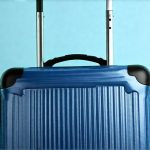Eating out is often a delightful experience—a chance to socialize, explore new flavors, and enjoy someone else’s cooking. However, for individuals managing urological conditions such as overactive bladder (OAB), interstitial cystitis (IC), or prostate issues, dining out can sometimes present challenges. Unexpected urges, discomfort during meals, or anxiety about restroom availability can diminish the enjoyment of a social outing. Fortunately, with a little planning and awareness, it’s entirely possible to navigate restaurant experiences comfortably and confidently. This article aims to provide practical tips for incorporating urology-friendly habits into your dining routine, allowing you to savor both the food and the company without unnecessary worry.
The key is proactive management rather than restrictive avoidance. It isn’t about eliminating restaurants or specific foods entirely; it’s about making informed choices and developing strategies that minimize potential triggers and maximize comfort. Understanding your individual sensitivities – what foods or beverages seem to exacerbate symptoms, how far you are from a restroom when dining out, and the timing of fluid intake – is paramount. This self-awareness will empower you to make mindful decisions that support your well-being while still enjoying the social aspects of eating out. Remember that everyone’s experience with urological conditions differs significantly, so these tips should be adapted to your specific needs and tolerances.
Navigating Beverage Choices
Beverages are often a significant factor in managing urological symptoms. Certain drinks can act as bladder irritants or increase fluid intake beyond comfortable levels. It’s crucial to understand how different beverages impact your body and make informed choices when ordering at a restaurant. Caffeine, for instance, is well-known to be a diuretic and bladder stimulant, so reducing or eliminating caffeinated beverages like coffee, tea, and some sodas can be highly beneficial. Similarly, alcohol, particularly beer and wine, can also irritate the bladder and increase urgency. Carbonated drinks, even those without caffeine, can cause bloating and pressure, potentially exacerbating symptoms.
Instead of automatically reaching for these common choices, explore alternative options that are gentler on your system. Water is always an excellent choice – staying hydrated is essential, but moderation is key. Herbal teas (avoiding those with caffeine) like chamomile or ginger can be soothing. Diluted fruit juices, such as cranberry diluted with water (despite some conflicting information about cranberry’s impact, dilution often reduces irritation), might also be tolerable for some individuals. It’s important to note that even seemingly harmless beverages can trigger symptoms in sensitive individuals, so paying attention to your body’s response is vital. Don’t hesitate to ask the server about ingredients and options. Understanding how hydration impacts your condition might also be assisted by reviewing these hydration habits for optimal urinary balance.
When ordering, consider asking for drinks served without ice. Excessive ice contributes to faster fluid intake, potentially increasing urgency. Also, sipping slowly throughout the meal rather than gulping down a large amount at once can help manage fluid volume more effectively. Finally, be mindful of hidden sources of caffeine or bladder irritants in beverages—some flavored waters or sparkling drinks may contain ingredients that trigger symptoms.
Pre-Meal Preparation & Restroom Strategy
Planning ahead is essential for a stress-free dining experience. Before leaving home, empty your bladder completely. This provides a buffer and can reduce anxiety about needing to go unexpectedly. When selecting a restaurant, research its facilities beforehand if possible. Look for restaurants with easily accessible and clean restrooms. Consider using online reviews or calling the establishment to inquire about restroom location and accessibility.
Once you arrive at the restaurant, immediately locate the restrooms. Knowing where they are can significantly reduce anxiety and allow you to feel more in control. Don’t hesitate to use the restroom before your meal begins, even if you don’t urgently need to—it’s a preventative measure that can offer peace of mind. If you anticipate a long wait time between ordering and receiving your food, consider discreetly excusing yourself for a quick restroom visit while waiting. This proactive approach minimizes stress and potential discomfort. This is especially helpful when considering travel tips for people with interstitial cystitis.
Finally, be prepared to politely ask if the restaurant has any accommodations for individuals with urgent needs. Some restaurants may allow you to cut in line or provide quicker access to restrooms if necessary. Don’t feel embarrassed to advocate for your needs—most establishments are happy to accommodate reasonable requests.
Dietary Considerations & Food Triggers
Beyond beverages, certain foods can also exacerbate urological symptoms. While the impact varies significantly from person to person, some common culprits include spicy foods, acidic fruits and vegetables (like citrus and tomatoes), chocolate, artificial sweeteners, and highly processed foods. Identifying your personal food triggers is crucial. Keeping a food diary to track what you eat and any corresponding symptom flare-ups can be incredibly helpful in pinpointing sensitivities.
When ordering at a restaurant, don’t be afraid to ask about ingredients and preparation methods. Request modifications if necessary. For example, ask for dishes to be prepared with less spice or without acidic ingredients. If you’re sensitive to artificial sweeteners, inquire whether they are used in sauces or dressings. Communicate your needs clearly and politely. Many restaurants are happy to accommodate dietary restrictions.
Consider ordering smaller portions to avoid overfilling your bladder. Eating a large meal can put pressure on the pelvic floor muscles, potentially leading to urgency or discomfort. Choose foods that are easy to digest and less likely to cause bloating. Lean proteins, whole grains, and non-acidic vegetables are generally well-tolerated options. Remember, it’s not about deprivation—it’s about making informed choices that support your comfort and well-being. Keeping a detailed daily food diary can help with this process.
Managing Urgency & Social Grace
Unexpected urges can happen even with the best planning. If you feel an urgent need to use the restroom while dining, don’t panic. Excusing yourself discreetly is perfectly acceptable. A simple “Excuse me for a moment” is often all that’s needed. Avoid drawing attention to your situation or feeling embarrassed. The majority of people will understand and not give it a second thought.
If you are with company, briefly explain the situation if you feel comfortable doing so, but don’t feel obligated to overshare details. A simple explanation like “I need to quickly step away” is sufficient. Remember that your health is a priority. Don’t hesitate to interrupt conversations or excuse yourself mid-sentence if necessary.
If you are concerned about potentially interrupting the meal or feeling rushed, consider choosing restaurants with more relaxed atmospheres and less formal settings. Buffets can be particularly challenging due to longer wait times for restrooms and increased fluid intake from sampling various foods. Finally, remember that it’s okay to leave a restaurant early if you are experiencing significant discomfort or anxiety. Your health and well-being are paramount, and there’s no shame in prioritizing your needs. Reviewing tips for managing work stress can also help with overall anxiety.





















